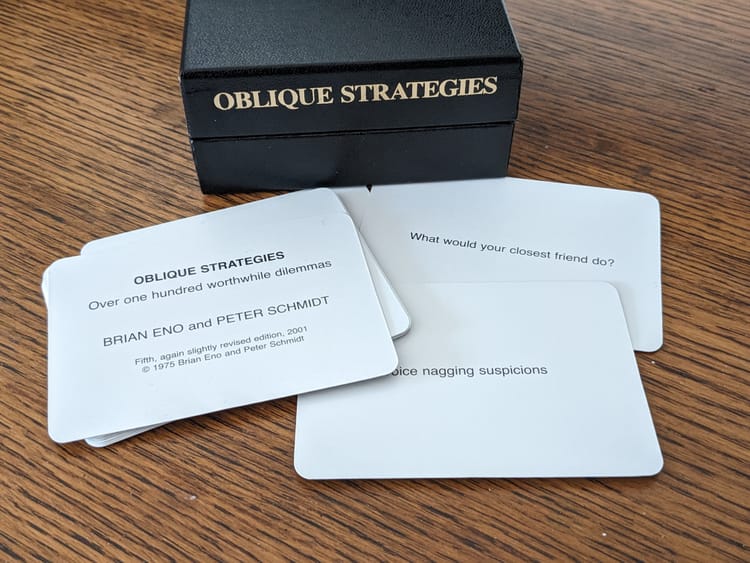For, with, of.

The cover of the September–October 2024 issue of Interactions (an HCI-centric periodical published by the Association for Computing Machinery) boldly proclaims: “Design for all. Design by all.” There are good articles inside about inclusion and inclusive design, so go give it a read.
But this phrase reminded me of something a colleague (👋 Hi Lynn!) once described to me, and which I've referred to often as a designer. With just three words—‘for’, ‘with’, and ‘of’—she taught me one way to better understand my role in any project.
Think of it like this:
- I can design something for someone. This can be transactional even if, as a designer, you ask questions and learn about the goals of the work.
- I can design something with someone—which implies some level of collaboration; the folks being served contribute in meaningful ways, have agency within the design process, etc.
- I can design something as part of a group, where we share some important element of identity or life experience.
As you move from for to with to of, you acknowledge and assert an increasingly intimate membership in the group being served. Being aware of your blind spots and shortcomings is something we need to develop as designers, so honestly recognizing where you fit in—if at all—is a good start.
“You are not your users.”
We may make the mistake of thinking we’re more a part of the group being served than we actually are. We imagine or guess what lived experience involves, and get to work, creating a dangerously flawed design based on assumptions and misunderstandings. This is the basis for the (largely corporate-speak) warning: “You are not your users.”
Even if you share or relate to some aspect of the identity of the group being served, your role as a designer introduces bias and conflict which should give you pause—so, even if you are…you aren't (your users).
There are just some labels you can’t ascribe to yourself. You can't boldly claim to be part of a group when you aren’t.
How do you move along this membership spectrum? And, perhaps more interestingly, should you try to? It is one thing to invite those with lived experience to participate in and contribute to the design process (or, better yet, inform that process)—that should be “table stakes”. Having those with lived experience involved and guiding the work should improve the outcome: this is the easiest way to move from ‘for’ to ‘with’. Listen and learn. Respect those giving their energy and time to the work.
But there are just some labels you can’t ascribe to yourself. You can't boldly claim to be part of a group when you aren’t. You can read all about financially precarious single parents, for example, but unless you are a financially precarious single parent, you…aren’t. And it is OK to never be of; you can do some useful work for and with folks. Thinking you're part of the group being served when you're not is a huge blind spot. Not only will the work suffer, those involved may feel patronized or insulted.
Some questions I've asked myself in the past to help get oriented:
- Am I approaching this challenge with humility and in recognition of my own limitations?
- Who can help me understand who should be participating?
- Whose voice isn't being heard and should be?
- How is my bias affecting the process? Affecting who is taking part?
- How do my goals and that of my organization relate to those of the people being served?
- How is data¹ (work product, testimonies, stories, etc.) being stewarded?
- Is that data stewardship process enthusiastically endorsed by those being served?
Wrap up
This simple, three-world model for examining one’s place within a design context came to me from the social good world. There, it helps describe and explore the relationship between two groups; e.g., a social good organization and the people it serves. As a researcher and designer in the tech space, I find it forces me to step outside the sometimes single-minded cloy of tech/corporate design patterns.
Have you heard of this model before? What's your experience with using it?
—
Notes
- I just finished reading Jer Thorp's book “Living in Data: A Citizen’s Guide to a Better Information Future”. It was an engaging read that, through the retelling of Thorp’s experiences as a curious data scientist, taught me a great deal about data. If you want to learn more about the impact (both positive and negative) of data, its collection, and (mis)use, I recommend you read it. Next time you create a form on a website, bang out a survey, or write up an interview guide, you'll be better prepared to collect data responsibly.
Thorp, J. (2021). Living in data: A citizen’s guide to a better information future. MCD, Farrar, Straus and Giroux.



